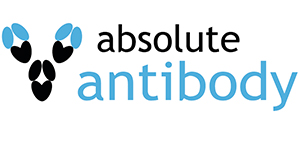Anti-Tau (MN423)
Anti-Tau [MN423], Recombinant, IgG kappa, Rabbit
SKU
ABAAb02389-23.0
Packaging Unit
200 μg
Manufacturer
Absolute Antibody
Availability:
loading...
Price is loading...
CloneID: MN423
Antigen Long Description: The original antibody was generated by hyper-immunizing C3H mice with tangle-enriched fragments of the Alzheimer paired helical filaments core.
Buffer Composition: PBS with 0.02% Proclin 300.
Chimeric Use Statement: This chimeric rabbit antibody was made using the variable domain sequences of the original mouse IgG format, for improved compatibility with existing reagents, assays and techniques.
Available Custom Conjugation Options: AP, HRP, Fluorescein, APC, PE, Biotin Type A, Biotin Type B, Streptavidin, FluoroProbes 647H, Atto488, APC/Cy7, PE/Cy7
Uniprot Accession No.: P10636
Specificity Statement: This antibody is specific for the pronase-resistant core PHF and the 12 kDa tau fragment. It does not recognize normal full-length tau. It is also reported that this antibody specifically recognizes tau truncated at Glu391 on the C terminus side. The addition or removal of a single residue at the C-terminus abolishes immunoreactivity.
Application Notes (Clone): The original format of this antibody was characterized in detail (Novak et al., 1989; PMID: 2602435) and has been extensively utilized in Alzheimer's disease research: It played a crucial role in the structural characterization of the Alzheimer paired helical filament (PHF) core (Wischik et al., 1988; PMID: 2455299), and was employed for extracting two peptide fragments (9.5 and 12 kDa) of the PFH pronase-resistant core through immunoblotting (Wischik et al. 1988; PMID: 3132715). Additionally, it was used to study the folding of the Alzheimer’s core PHF subunit through competitive ELISA and western blotting (Skrabana et al., 2004; PMID: 15196943). It has been instrumental in the molecular investigation of neurofibrillary degeneration in Alzheimer's disease (Bondareff et al., 1994; PMID: 7509849). Epitope mapping revealed that it requires a glycine at position -3 with respect to the C terminus (Khuebachova et al., 2002; PMID: 11983234). In the realm of tau protein studies related to Alzheimer's disease, it has been employed for immunohistochemistry on brain tissue samples (Mondragón-Rodríguez et al., 2014; PMID: 24033439). Double and triple-labeled immunofluorescence was conducted using this antibody on brain tissue from Alzheimer's disease patients (Mondragón-Rodríguez et al., 2014; PMID: 24033439) (García-Sierra et al., 2003; PMID: 12719624). This antibody was used to immunoblot purified candidate tau analogs (Novak et al., 1993; PMID: 7679073). Furthermore, it was employed in immunohistochemical staining of brain tissue from patients with Alzheimer's disease, NCI, PSP, or CBD (Berry et al., 2004; PMID: 15475684). Western blot analysis on brain tissue from Alzheimer's patients was performed (Fitzpatrick et al., 2017; PMID: 28678775). This antibody was also used for a competitive ELISA on the Alzheimer's disease expression cDNA library made from the hippocampus of a 70-year-old patient who died from Alzheimer’s disease (Khuebachova et al., 2002; PMID: 11983234).
Antigen Long Description: The original antibody was generated by hyper-immunizing C3H mice with tangle-enriched fragments of the Alzheimer paired helical filaments core.
Buffer Composition: PBS with 0.02% Proclin 300.
Chimeric Use Statement: This chimeric rabbit antibody was made using the variable domain sequences of the original mouse IgG format, for improved compatibility with existing reagents, assays and techniques.
Available Custom Conjugation Options: AP, HRP, Fluorescein, APC, PE, Biotin Type A, Biotin Type B, Streptavidin, FluoroProbes 647H, Atto488, APC/Cy7, PE/Cy7
Uniprot Accession No.: P10636
Specificity Statement: This antibody is specific for the pronase-resistant core PHF and the 12 kDa tau fragment. It does not recognize normal full-length tau. It is also reported that this antibody specifically recognizes tau truncated at Glu391 on the C terminus side. The addition or removal of a single residue at the C-terminus abolishes immunoreactivity.
Application Notes (Clone): The original format of this antibody was characterized in detail (Novak et al., 1989; PMID: 2602435) and has been extensively utilized in Alzheimer's disease research: It played a crucial role in the structural characterization of the Alzheimer paired helical filament (PHF) core (Wischik et al., 1988; PMID: 2455299), and was employed for extracting two peptide fragments (9.5 and 12 kDa) of the PFH pronase-resistant core through immunoblotting (Wischik et al. 1988; PMID: 3132715). Additionally, it was used to study the folding of the Alzheimer’s core PHF subunit through competitive ELISA and western blotting (Skrabana et al., 2004; PMID: 15196943). It has been instrumental in the molecular investigation of neurofibrillary degeneration in Alzheimer's disease (Bondareff et al., 1994; PMID: 7509849). Epitope mapping revealed that it requires a glycine at position -3 with respect to the C terminus (Khuebachova et al., 2002; PMID: 11983234). In the realm of tau protein studies related to Alzheimer's disease, it has been employed for immunohistochemistry on brain tissue samples (Mondragón-Rodríguez et al., 2014; PMID: 24033439). Double and triple-labeled immunofluorescence was conducted using this antibody on brain tissue from Alzheimer's disease patients (Mondragón-Rodríguez et al., 2014; PMID: 24033439) (García-Sierra et al., 2003; PMID: 12719624). This antibody was used to immunoblot purified candidate tau analogs (Novak et al., 1993; PMID: 7679073). Furthermore, it was employed in immunohistochemical staining of brain tissue from patients with Alzheimer's disease, NCI, PSP, or CBD (Berry et al., 2004; PMID: 15475684). Western blot analysis on brain tissue from Alzheimer's patients was performed (Fitzpatrick et al., 2017; PMID: 28678775). This antibody was also used for a competitive ELISA on the Alzheimer's disease expression cDNA library made from the hippocampus of a 70-year-old patient who died from Alzheimer’s disease (Khuebachova et al., 2002; PMID: 11983234).
| SKU | ABAAb02389-23.0 |
|---|---|
| Manufacturer | Absolute Antibody |
| Manufacturer SKU | Ab02389-23.0 |
| Package Unit | 200 μg |
| Quantity Unit | STK |
| Reactivity | Human |
| Clonality | Recombinant |
| Application | Immunofluorescence, Western Blotting, ELISA, Immunohistochemistry, Immunocytochemistry |
| Isotype | IgG kappa |
| Host | Rabbit |
| Product information (PDF) | Download |
| MSDS (PDF) | Download |

 Deutsch
Deutsch







